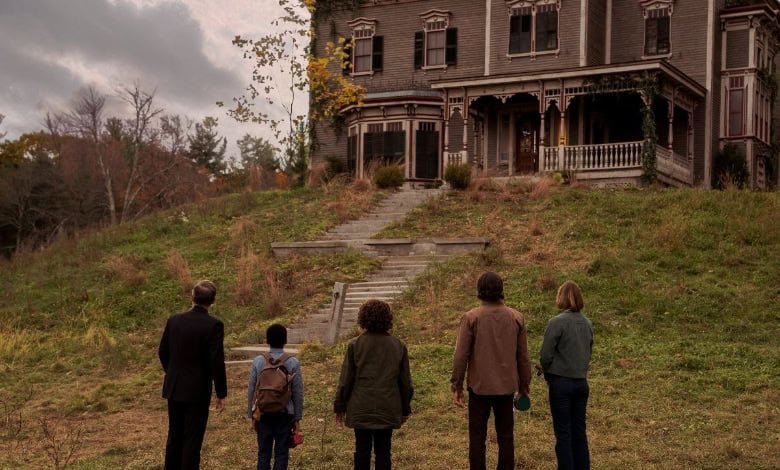
I’d like to think that even in these most divisive of times, there is a single truth we can all agree on: art is subjective. What you get out of a filmgoing experience and what I get out of a filmgoing experience can be two vastly different things. How is this possible? Did we not see the same film? Of course, we did, and the same series of images projected on a screen in a dark room at twenty-four frames per second was taken in by our respective eyeballs. But your eyeballs and my eyeballs are two entirely different factors. We’ve lived different lives, seen different things, and trained our own eyes (perhaps even unconsciously) in different ways. Similarly, while the information input into our minds by the film is objective, locked down by the temporal editing of the film itself, the way each of us perceives this information could be entirely different. What your brain is most stimulated by in a given frame may not be what my brain is most stimulated by.
And so, the art of filmmaking is essentially that of utilizing a technically precise craft to deliver an experience that feels authentic and verisimilitudinous to the filmmaker’s sensibilities. You cannot please everyone, and you never will. But your best bet in any artistic medium is to create something that feels honest and unique to you and put that out into the world, hoping it resonates with an audience on some level. James Joyce once said, “In the particular is contained the universal.” In other words, it is through specificity that one’s art can achieve universality.
I say all of this to explain why I enjoyed Gary Dauberman’s Salem’s Lot a good deal. It’s a rickety and often crassly held-together movie that has clearly been through the wringer with test screenings and reshoots over the past several years (the film was shot back in 2021 with the intention of a theatrical release, only to be unceremoniously dumped onto Warner Bros.’ Max streaming service this past week). The sheer amount of ADR (additional dialogue recording) used throughout is absolutely mind-numbing, especially given how pointless and superfluous much of it is.
But somehow, through the cobwebs and creaking floorboards of its post-production purgatory, Dauberman’s adaptation of Stephen King’s iconic novel still feels like a distinct, exacting, and often delightfully idiosyncratic take on the material.
I find it incredibly ironic (a joke, if you will) that the same studio that had such blind faith in Todd Phillips’ Joker: Folie à Deux—pouring a gargantuan budget into a film featuring Joker being sexually assaulted in prison as a righteous turning point for his character—somehow found Salem’s Lot an unsafe bet for proper marketing or a traditional release. There’s a lot to like about Dauberman’s film, and I’d imagine there’s a cut from earlier in post-production with even more to like, but Warner Bros. inexplicably got cold feet.
If you don’t know Gary Dauberman by name, you almost certainly know him by his work. Dauberman has been instrumental in crafting and sustaining The Conjuring franchise and the It films. He served as a writer on Annabelle, It, Annabelle: Creation, The Nun, and It: Chapter 2, before stepping up as writer-director of Annabelle Comes Home. Regardless of how you feel about those films, it’s undeniable that Dauberman’s filmography represents a cross-section of some of the most successful and broadly influential horror blockbusters of the past decade. So, seeing him transition from the intimate, single-setting scares of Annabelle Comes Home to the grand-scale terror of King’s Salem’s Lot is a genuine treat.
Where The Conjuring-adjacent films and even Andy Muschietti’s It films are driven by a rhythm of heavy-handed jump scares, Salem’s Lot sees Dauberman deliberately slowing things down, taking a far more classical approach that benefits the material immensely. There are scares here, but by allowing the story time to breathe and evolve, Dauberman crafts a film that feels less like a string of jump-scares loosely connected by a story and more like a film where the scares grow naturally from the narrative.
In tandem with this, Dauberman’s directorial approach (alongside cinematographer Michael Burgess and editor Luke Ciarrocchi) delivers a slow-burn, gradually crescendoing visual style that feels deliberate and rooted in distinct cinematic ideals. There’s a genuinely inspired verve in how Dauberman and his team use associative editing (the cross-fade from a vampirized boy in a hospital bed to the blood bag forming a coffin-like visual around him was especially striking), sustained takes (Burke walking down a dark hallway with only his glowing crucifix as a light source was fantastic), and exacting suspense through atonal cuts (Mike Ryerson’s back-and-forth burial scene in a cemetery is wonderfully disconcerting).
Another plus is that the entire cast is superb and game to play with the film’s tone and frequency. As a novel, Salem’s Lot is Stephen King crafting a tale of dread that takes classical vampire mythology and applies it to then-modern-day Maine. Dauberman’s film captures the inherent joy in that, reverently photographing characters leafing through vampire textbooks and comic books for exposition in a goofy, kitschy, and fun way. One advantage the film has over the book is the infectious glee of watching esteemed actors like Alfre Woodard deliver lines about vampires with deadly seriousness.
Is Salem’s Lot a bit of a mess? For sure. Is it also insanely fun? Absolutely. The film struggles to condense King’s sprawling novel into a coherent two-hour runtime, evident in the rapid ramp-up, near absence of a second act, and difficulty balancing its large cast of characters. The elements tacked on during post-production are painfully obvious, leading to some heavy sighs and head-scratching. But there are moments when Dauberman’s original intent tears through the fabric of the messy ADR and streaming quality, delivering something that feels joyously genre-specific and spooky.
RGM GRADE
(C+)
Art is subjective, and I regret to inform you all, but I am a simple man. If a movie has elements like old-school horror movie posters on characters’ walls, cheeky references to classic monster films, and a scene set at a drive-in theater, my chances of liking that film increase tenfold. And sure, the fact that I live in Florida, where Hurricane Milton is currently barreling toward my home, probably lowered my defenses a bit for this film. But genuinely, I enjoyed Salem’s Lot, and it made me excited to see what Dauberman does next.
He’s spent a decade essentially being the modern-day Jimmy Sangster (the screenwriter behind Hammer Horror’s earliest and best films). Now that he’s directing his own scripts, he’s clearly pushing himself even further, and I’m beyond excited to see where that takes him.
Discover more from RATINGS GAME MUSIC
Subscribe to get the latest posts sent to your email.










